Can you make the M on an M&M candy float? We did! This floating M&M experiment is easy, quick, and pretty cool! There are so many fun candy experiments to try, and this has to be one of our favorites! Make the most of any candy leftovers, with a hands-on science experiment instead!
Explore Science With M&M’s
Candy science is hands-on learning that’s tasty, fun, and educational too! Of course, you might have to try a piece or two in the process like we did with our Candy Taste Test Experiment! Now that was a science for the senses!
Our latest candy science experiment with leftover candy is to see if we could get a floating m off of an M&M. Find out the science behind how the M floats below or is it magic?
Can you make a m float for your next kitchen science experiment? Dig into your kid’s candy bucket to find out! There’s so much to learn already available at your fingertips. Set up simple science anytime at home.
LOOK: 15 Amazing Candy Science Experiments
What Is The Scientific Method For Kids?
The scientific method is a process or method of research. A problem is identified, information about the problem is gathered, a hypothesis or question is formulated from the information, and the hypothesis is tested with an experiment to prove or disprove its validity. Sounds heavy…
What in the world does that mean?!? The scientific method should simply be used as a guide to help lead the process. It’s not set in stone!
You don’t need to try and solve the world’s biggest science questions! The scientific method is all about studying and learning things right around you.
As kids develop practices that involve creating, gathering data evaluating, analyzing, and communicating, they can apply these critical thinking skills to any situation. Click here to learn more about the scientific method and how to use it.
Even though the scientific method feels like it is just for big kids…
This method can be used with kids of all ages! Have a casual conversation with younger kiddos or do a more formal notebook entry with older kiddos!
Helpful Science Resources To Get You Started
Here are a few resources that will help you introduce science more effectively to your kiddos or students and feel confident yourself when presenting materials. You’ll find helpful free printables throughout.
- Best Science Practices (as it relates to the scientific method)
- Science Vocabulary
- 8 Science Books for Kids
- All About Scientists
- Science Supplies List
- Science Tools for Kids
Click here to get your FREE Science Challenge Calendar
M&M Science Experiment
Here is another fun M&M experiment to try! Why do the M&M colors not mix?
Supplies:
- M&M’s in all colors. Making a rainbow is fun!
- Water
- Shallow bowl or mini cups (you can try this in individual cups like you see below or in one cup like the video)
Instructions:
STEP 1. First, you need to fill your container{s} with water.
STEP 2. Place M&M’s m side up in the water.
What happens to the M&M? It sinks! Have your kids make a prediction about what they think will happen before dropping the candy into the water.
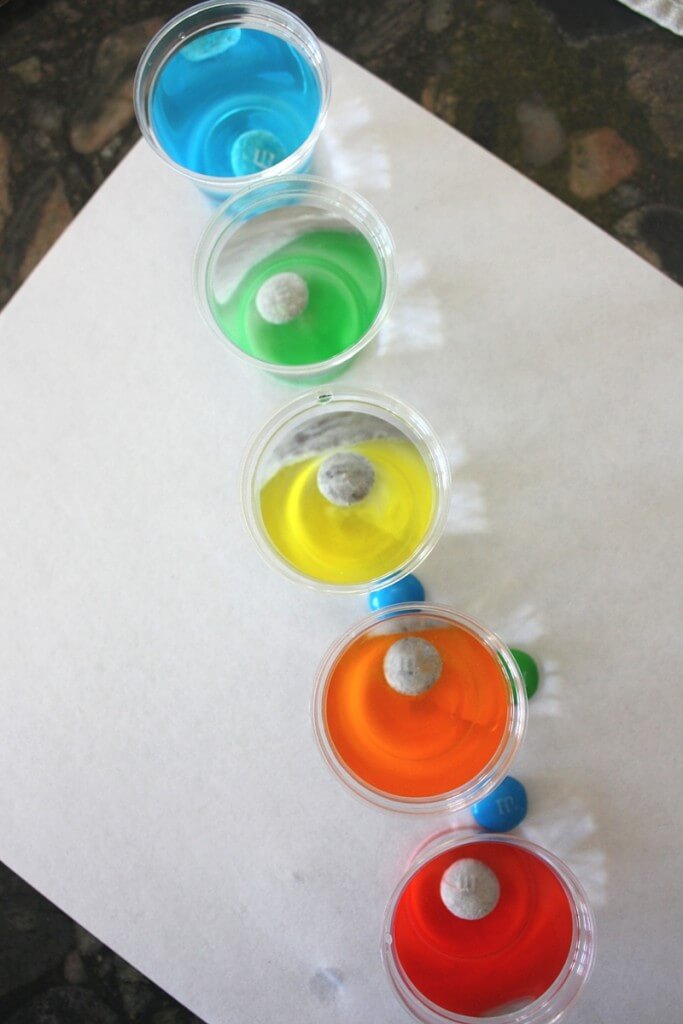
Or try a single cup version for a fun and unique effect too!
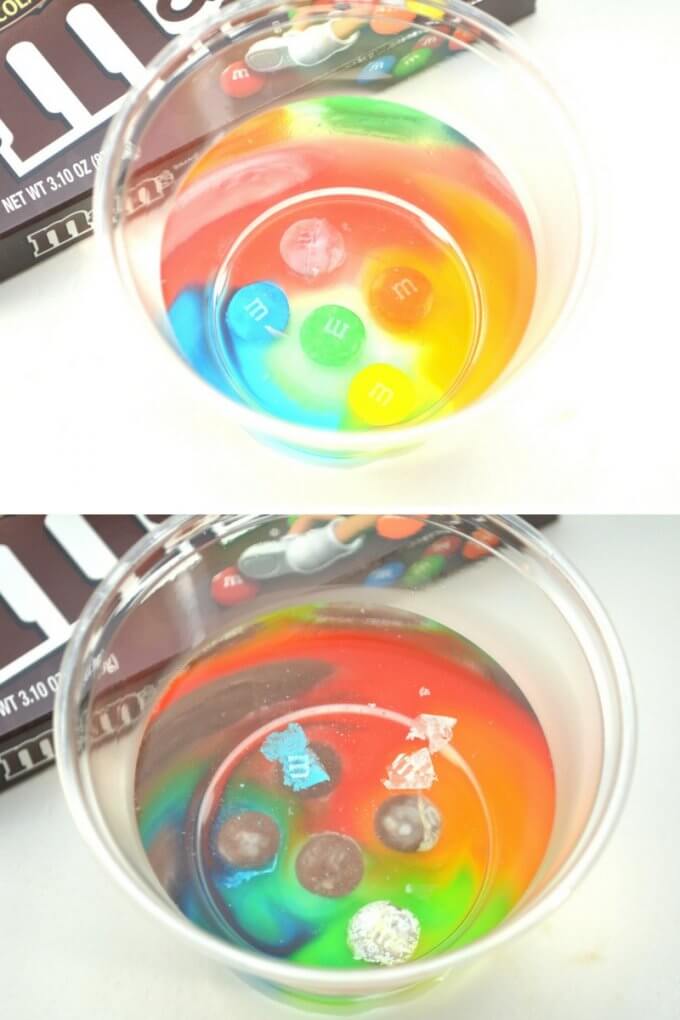
TIP: The floating m doesn’t happen immediately, but the color dissolving off of the M&M happened almost immediately. You may have to wait up to 10 minutes to see this happen.
The materials used to color the m&m aren’t afraid of water, so they dissolve quickly and make for rainbow colored water! The chocolate on the other hand did not dissolve quickly, but we wanted to see the floating m!
The first to float was the red m&m. They did not all have a floating M immediately. In fact, the last to go was blue.
It took about 10ish minutes to see the first floating m. They all floated by 20 minutes. We didn’t set a stopwatch, but that would be a fun addition for STEM learning.
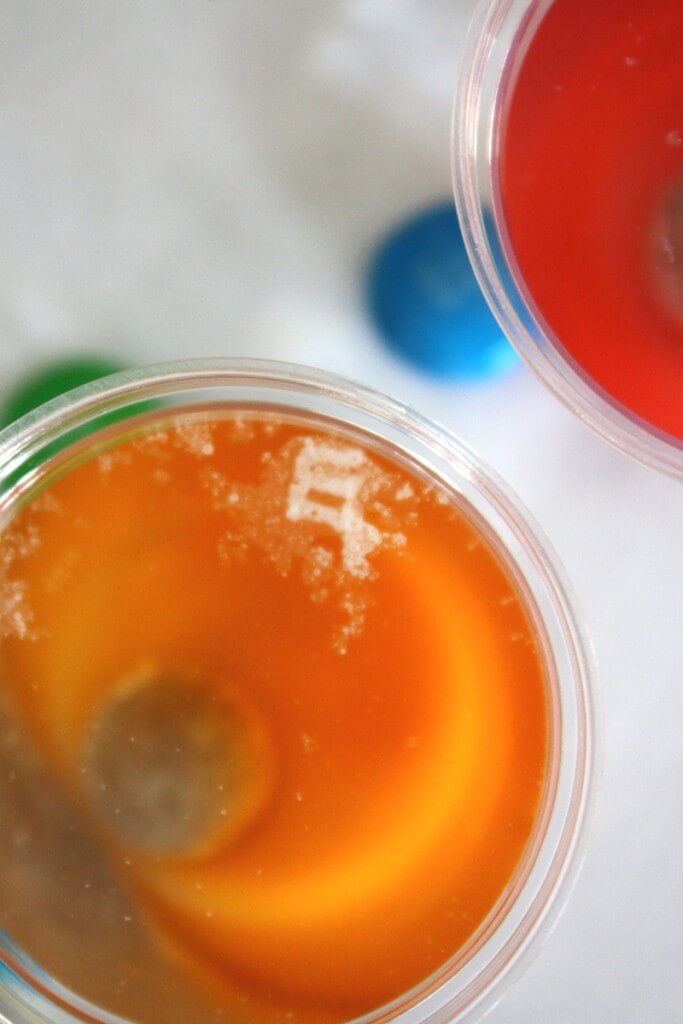
The Science Of The Floating M
And there it is! The floating M! Why does the M float? It is because some parts of this favorite candy are soluble in water.
What does water soluble mean? It dissolves in water of course! Water molecules are able to surround the molecules of the solid, and dissolve it into the water.
With this floating M activity, you can see the colored shell of the candy is water soluble. However, the special m is not soluble in water! As the shell dissolves, the M floats free.
The M is made out of edible paper. You can also see this paper used on cakes too. My son wanted to go out and get a piece to eat, but I convinced him it wouldn’t taste that great!
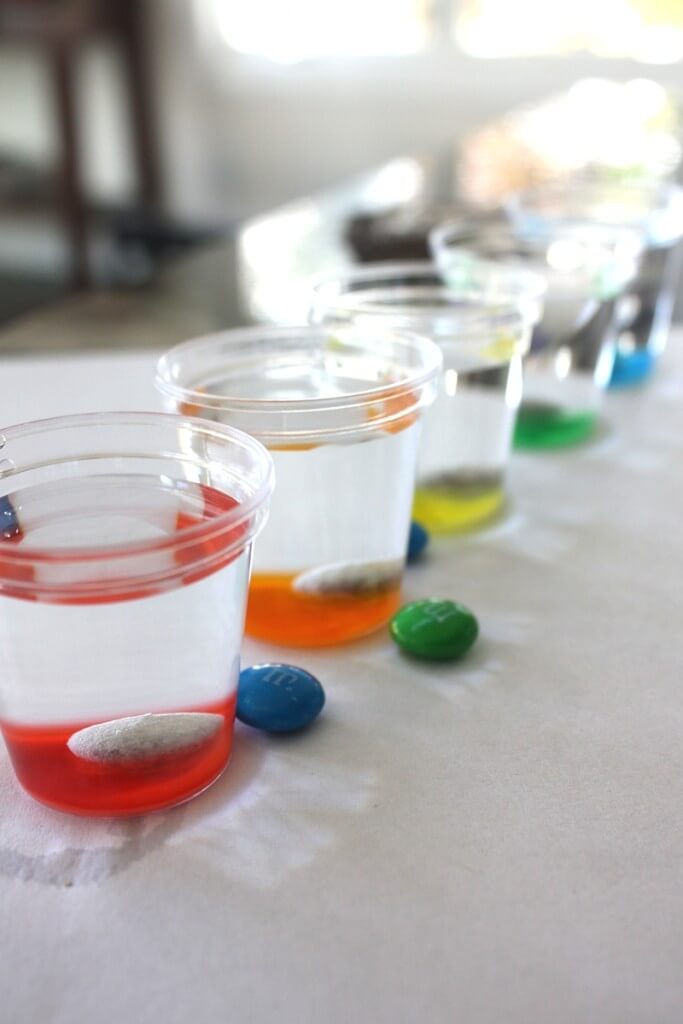
M&M Science Projects
Science projects are an excellent tool for older kiddos to show what they know about science! Plus, they can be used in all sorts of environments including classrooms, homeschool, and groups.
Kids can take everything they have learned about using the scientific method, stating a hypothesis, creating variables, and analyzing and presenting data.
Want to turn this M&M into a cool science project? Check out these helpful resources below.
More Fun Science Experiments To Try
You can find over 50 science projects for kids. Here are a few of our favorites…


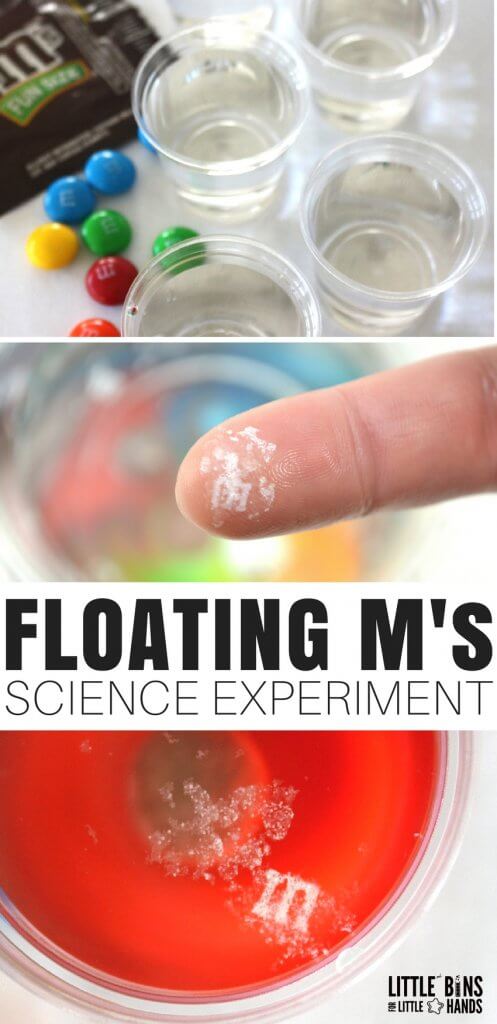
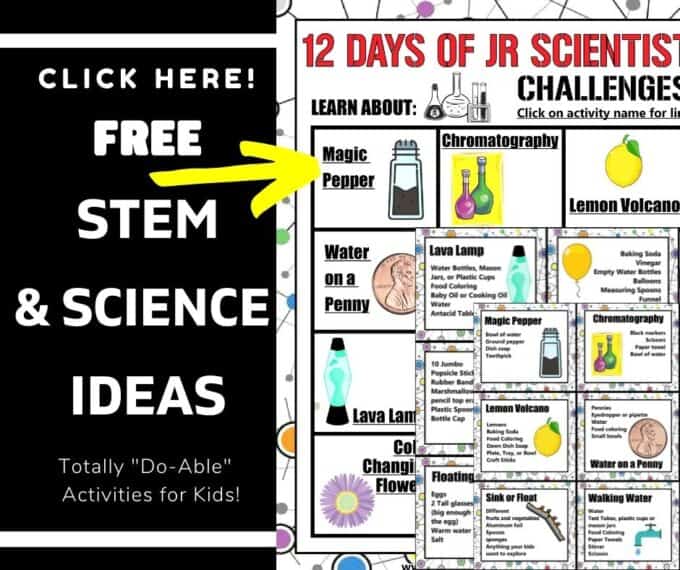
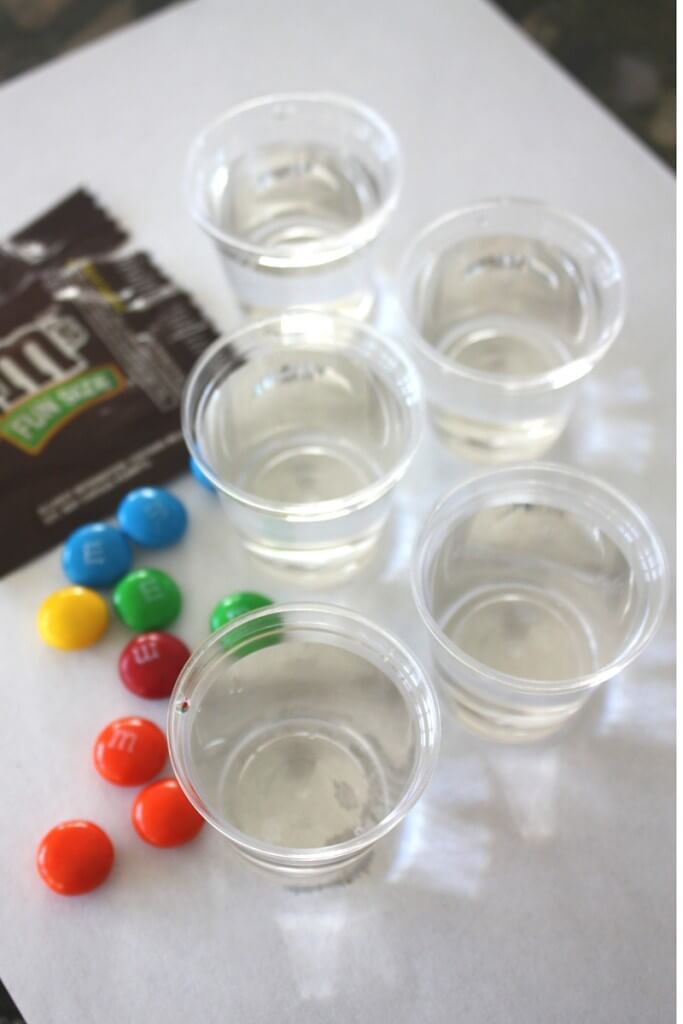






What fun!
Great love it